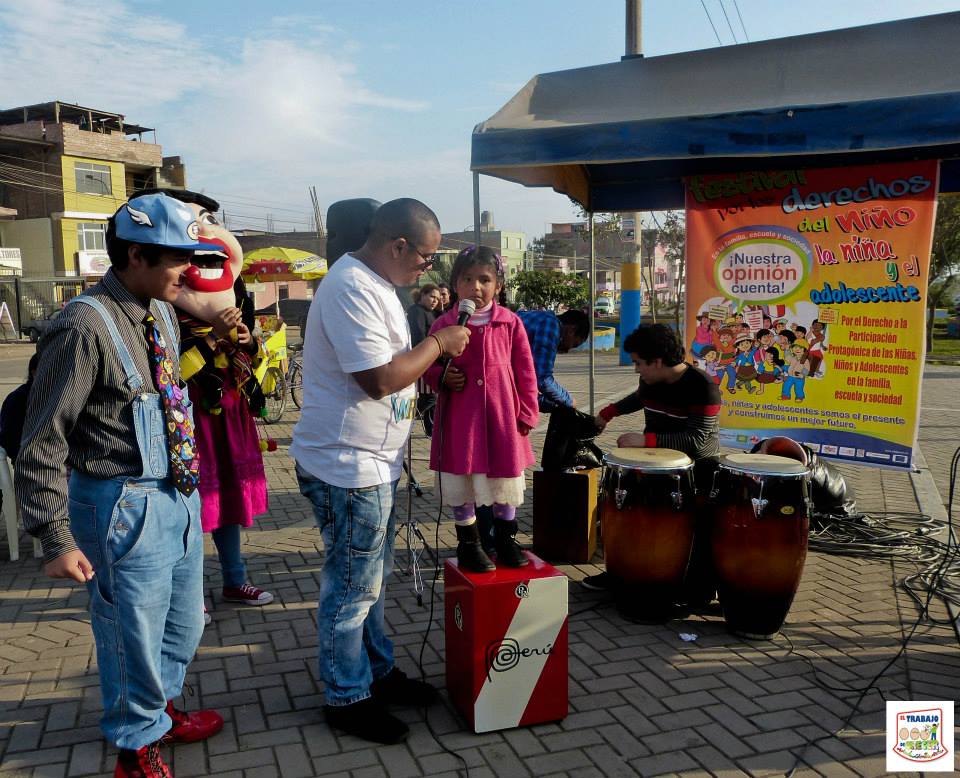On July 18th, the kids involved in the project Trabajo de Crecer put on a festival in Villa El Salvador to educate the public (both adults and children) about children’s rights. There was a lot of singing, dancing, speeches, and many games where players were asked questions about children’s rights.
Most of the emphasis was on the right to participation. Banners and signs all proclaimed that “our opinion matters!” and that children are the present, not just the future. This right to participation, as many kids at the festival noted, is currently being threatened by changes to the Peruvian laws covering childhood and adolescence. The proposed changes state that children have rights to self-expression, participation, and assembly only with the permission and supervision of their parents. From the perspective of the movements of organized children in Peru, this is a major setback in terms of children’s rights and also violates the underlying principles of the UN Convention on the Rights of the Child, which grants children these rights without stipulating parental control.
As many scholars of childhood have noted, the participatory clause (article 12) of the Convention is a particularly significant challenge to older paradigms of childhood and requires a substantial re-thinking of children’s political and social roles. It states that “States Parties shall assure to the child who is capable of forming his or her own views the right to express those views freely in all matters affecting the child, the views of the child being given due weight in accordance with the age and maturity of the child.” This clause has led to the development of numerous children’s councils, children’s assemblies, and other participatory bodies around the world (including the Consejos Consultivas de Niñas, Niños y Adolescentes in Peru). However, these councils are often quite limited in terms of the version of democracy that they promote (as Hava Gordon and I have recently written about), in terms of their actual authority and power, and in terms of their membership.
The festival for children’s rights, as a space for building public awareness, seems to me to be one way to complement the structures of participation. State-based structures for participation help to create opportunities for the implementation of children’s rights, but festivals and public events can also play a role facilitating a cultural shift toward seeing children as social and political actors.


Leave a Reply